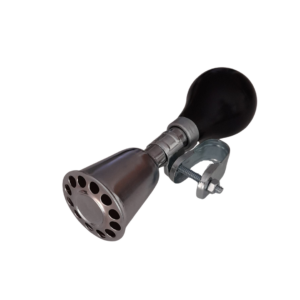Learning to ride a bike is a childhood rite of passage. However, bike riding can be a daunting prospect to many children – especially when it’s their first time in the saddle.
As parents, it’s our job to support our kids and build their confidence during their first few times in the saddle. But when it comes to teaching your child to ride a bike, it can be tricky to know where to start.
Here are our top ten tips to teach a child how to ride a bike:
1. Opt for a children’s bike with training wheels rather than a balance bike.
Balance bikes don’t have any pedals, which allows kids to focus solely on balancing when they first start to learn how to ride a bike. However, this deprives children of the opportunity to learn other key skills needed for bike riding, such as how to pedal.
That’s why we recommend purchasing a kids’ bike for your child that allows them to develop these skills from day one.
2. Use training wheels or stabilisers, which can help to keep your child balanced as they master other skills, like keeping their feet on the pedals.
3. Use a bike assistance handle to reassure your little one as they continue to grow their confidence on a bike.
A removable assistance handle like Push Me Home is a great choice, as it can simply be unclipped from your child’s bike when they’re ready to start riding on their own.
This type of handle is a great alternative to balance bikes as your child learns to balance.
4. Choose a lightweight bike that is the right height for your child. This will make the process of learning to ride easier, compared to learning on a bike that is too heavy or too big.
A bike that is the ideal height for your child will allow them to have their feet flat on the ground when they are sitting on the seat.
If their feet are off the ground when they are sitting in the saddle, the bike may be too big for them.
5. For children learning to ride, a bike helmet is a must-have (as it is for all bicycle riders!) Check out our guide to choosing a suitable bike helmet for your child here.
6. Crashes and falls are all part of the process when it comes to learning to ride a bike. Kids learning to ride may like to use elbow or knee pads, to minimise the risk of any cuts and grazes along the way.
7. Find an area that your child can practice in that offers them a clear run with minimal interruptions or obstacles (especially at first).
Although it may seem like a good idea to choose somewhere grassy, as this will offer them a soft landing if they fall, this can actually be counterproductive, as grass can be challenging to ride on.
Instead, choose an area with concrete or tarmac, as this will be smoother for them to ride on.
8. Start by getting your child to sit on the seat, and walk their bike toward with their feet on the ground. Get them to try doing this in straight lines, as well as on slight slopes and turns, as this will help them to develop their balance.
While they are doing this, you can also get them to experiment with the hand brakes, so they learn that this is how they stop once they get moving.
9. Once they’ve mastered balancing, it’s time to move on to pedalling.
The clock position technique can be useful for teaching this. Essentially, you will want to start with the pedal in an eleven o’clock position. This is a good starting position for your child to put one foot on the pedal and push forward, then down as the pedal reaches the one o’clock position.
As they do this, the second pedal will come up on the other side, so they will then want to repeat this.
You can continue to use clock analogies to guide what they are doing with their feet as they continue to pedal – for example, pointing their foot to the ground as it reaches five o’clock, or keeping light pressure on the pedal as it comes up from the seven o’clock mark.
10. Encourage your child at every step of the way. Provide them with praise when they master new skills, and encouragement when they’re still trying.
The key is to practice, practice, practice, and if at first you don’t succeed, get back in the saddle and try again!
Learning to ride a bike can be a different experience for everyone, so the key is to provide your child with all the time they need to learn this new skill.
If your child is ready to get started on their journey of learning to ride, be sure to check out our range of bike assistance products here.





